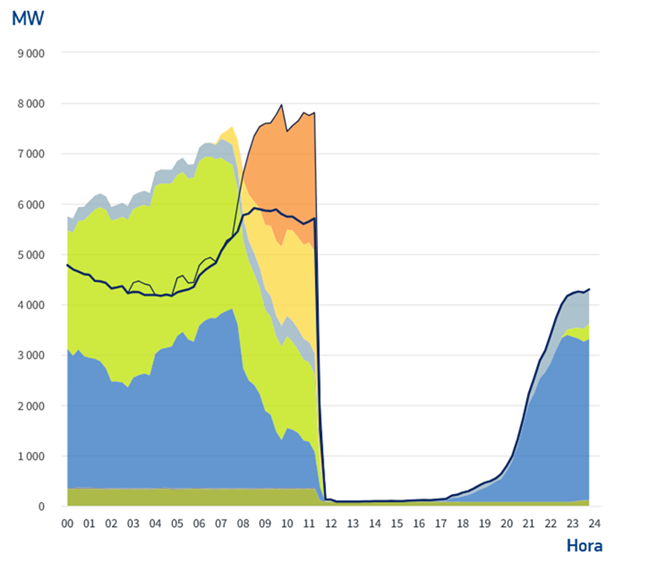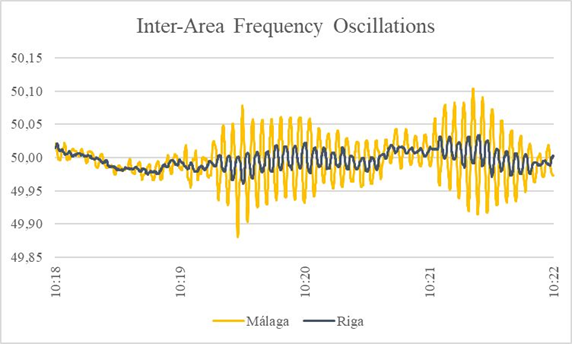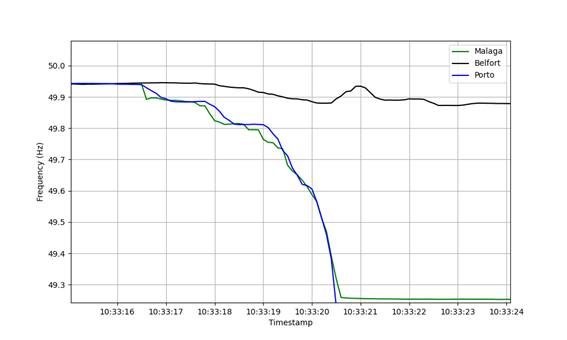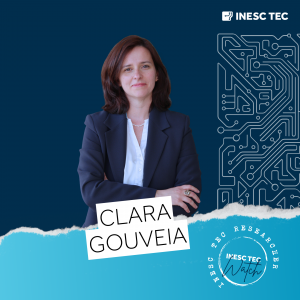Twenty-five years ago, José Saramago – the only Portuguese recipient of the Nobel Prize in Literature – wrote a novel titled Death with Interruptions. Its first sentence reads: “The following day, no one died.” On 28 April 2025, starting at 11:33 am (Portugal time), millions of people across the Iberian Peninsula lost power. Much like in Saramago’s novel, where death ceased its work, on this day, traffic lights went dark, trains and metros halted, planes were grounded, hospitals relied on backup generators, and telecommunications networks stopped functioning. The exact cause of the blackout remains under investigation and may take months to uncover. Nevertheless, experts warn of the many potential causes. Global media quickly echoed the unfolding situation. The New York Times, for example, featured articles citing sources from Portuguese, Spanish, and French electricity networks, along with video footage of events in real time. In this edition of INESC TECWatch, we consulted our energy systems experts to clarify the established facts and, above all, to reflect on the lessons learned. Between 28 April and the publication of this issue, our researchers released a position paper titled “Retrospective and Lessons from a Blackout”, available here.
Timeline of events
On the morning of 28 April, Spain’s power system was supplying nearly 33GW of electricity domestically, and exporting to Portugal, France, and Morocco. Most of this electricity was generated from solar energy (23 GW), with an additional 3 GW from wind power. This resulted in a system heavily reliant on renewable power sources. Synchronous generation came from nuclear (3.5 GW), gas (1.5 GW), biomass (1 GW), and solar thermal (1 GW), while hydropower was nearly negligible.
As João Peças Lopes, Director of INESC TEC, explains: “Portugal was consuming about 5,800 MW, plus 2,100 MW for hydro pumping, importing more than 2,500 MW from Spain due to favourable market prices. Most of the imported energy was used in reversible hydro plants.” Synchronous generation in Portugal was also minimal, as detailed by Peças Lopes: 185 MW from run-of-river hydro, 270 MW from combined-cycle gas, 90 MW from biomass, and 20 MW from cogeneration. The figure below illustrates the generation supply per technology in Portugal before and after the blackout.

![]()
Source: REN
“The power system must continuously ensure a balance between supply and demand — a balance that is monitored through the frequency value, a fundamental quantity measured in Hertz (Hz), which stands at 50 Hz (in Europe) when the electricity system is in equilibrium. When consumption exceeds production, frequency decreases; when production exceeds consumption, frequency increases. This frequency deviation is a critical indicator for grid operators, who use it to adjust automatically production and consumption in order to maintain a stable system,” explains Luís Seca, Executive Board Member at INESC TEC and also a researcher in the field of power systems.
Oscillations and Frequency evolution
At around 11:20 am (Portugal mainland time) on 28 April, abnormal frequency fluctuations were detected in the Iberian Peninsula’s electricity grid. These oscillations were recorded by two devices known as PMUs (Phasor Measurement Units), which are used to measure, with high precision, the amplitude and phase angle of voltage and current in electrical systems. One of these devices was located in Málaga (Spain) and the other in Porto (Portugal), specifically at the INESC TEC headquarters.
The measurements showed that the oscillations in Spain and Portugal were in phase opposition to those recorded by another PMU in Riga (Latvia), and that these oscillations were poorly damped — a potential sign of instability in the electricity grid. The oscillation frequencies ranged between 0.2 Hz and 0.7 Hz and remained in the system until the main incident occurred, albeit with lower amplitude.
The following figure illustrates the frequency evolution in Málaga and Riga, as recorded by Grid Radar.

Source: Grid Radar
What happened after the oscillations
Within seconds, a failure in Spain triggered a chain reaction that led to the near-total collapse of the Iberian power system. Let us look at the technical details and facts surrounding the event.
At 12:33:16 (Spanish time, one hour ahead of mainland Portugal), a major generation loss occurred in the southeast of Spain, followed by a second at 12:33:18. In other words, one power plant stopped injecting energy into the grid, and two seconds later, another plant was disconnected — causing a serious issue in the electrical network.
Following this event, several photovoltaic generation plants automatically disconnected from the grid, in accordance with their protection protocols, in order to safeguard the integrity of their equipment. Within just 5 seconds, approximately 15 GW of generation were lost in Spain. The frequency of the Iberian system dropped dramatically, prompting the shutdown of all generation units in both Portugal and Spain, as explained by João Peças Lopes, who is also a full professor at the Faculty of Engineering of the University of Porto (FEUP).
Portugal was also affected at this stage, as the frequency drop caused all power plants in the country to shut down. “The frequency derivative (or rate of change) in Portugal exceeded 1.5 Hz/s, which shows how quickly the system was losing its balance. The protection systems operated as planned, leading to a generation loss and the disconnection of the interconnection with France,” explains Luís Seca.
The figure below shows the evolution of frequency over 9 seconds at several nodes of the European system (Porto, Málaga, and Belfort).

Source: Laboratório X-Energy do INESC TEC + Grid Radar
What happened after the blackout began?
Given the massive generation shortfall that occurred within the Iberian system, the frequency plummeted very rapidly, triggering emergency control measures through frequency-based load shedding systems.
The loads were disconnected in the following order: first, the pumps at hydro pumping stations (which were consuming energy to pump water upwards), then some large energy consumers (with whom prior agreements existed to shut down if necessary), and finally some non-priority loads.
However, due to the severity of the generation deficit, it was still impossible to stop the frequency collapse. As a result, all remaining generation units in operation were successively disconnected by their frequency protection systems, leading to a total system collapse. This happened only a few seconds after the generation loss in Spain, as INESC TEC experts explain.
The operational response to the disturbance also included the immediate activation of primary frequency control and the mobilisation of secondary and tertiary reserves during the initial moments of the event.
Service Restoration
How was the system recovery attempted? Following the blackout, black-start procedures were implemented. In Portugal, power plants with black-start contracts (i.e. the capability for autonomous restart), namely Castelo de Bode and Tapada do Outeiro, were activated. Electrical “islands” were formed around these plants, and small loads were gradually reconnected in incremental steps (initially in steps of approximately 5 MW, followed by 10 MW and 30 MW).
“This process naturally took some time, as a recovery that is too rapid can lead to large variations in frequency and voltage, potentially causing further system collapses — which, in fact, did occur,” explains Luís Seca.
By 10:00 pm, the Spanish Transmission System Operator (REE) had already restored 43.3% of demand and “re-energised” 421 out of 680 substations (62%), with supply exceeding 90% in the early hours of Tuesday. In Portugal, at the same time, the National Electricity Network (REN) had restored power to 85 out of its 89 substations and switching stations, with only Trafaria, Divor, Estremoz, and Portimão remaining without power. At that point, around 2.5 million Portuguese consumers already had electricity again, the interconnection with the European grid had been re-established, and by the end of the night, virtually all electricity demand in Portugal had been restored.
Identifying the causes and lessons to be learned
“As with any blackout, it is essential to understand what happened, particularly what triggered the generator shutdowns in Spain that led to the chain of events described. A post-mortem analysis of the timing logs from the various protection systems, along with the evolution of voltage and frequency over time, will shed light on the incident. It may also be necessary to conduct studies that recreate the pre-disturbance operating conditions to understand the root cause of the incident,” explains João Peças Lopes.
Luís Seca and João Peças Lopes add that, although the specific causes are still under investigation, “the analysis of similar past incidents points to three possible contributing factors: a sudden generation loss (n-2 contingency); low system inertia due to high penetration of renewables, which makes frequency behaviour more sensitive to imbalances; and issues with voltage excursions and their control.”
“The frequency oscillations observed between areas of the Iberian system and the Baltic countries are associated with a problem known in the literature as small-signal stability, where power oscillations induce frequency variations and voltage fluctuations that can be significant. In weak systems with low short-circuit power, even small angular disturbances can lead to substantial voltage oscillations,” João Peças Lopes further notes.
In fact, these oscillations – also referred to as Low Frequency Oscillations (LFOs) – are a phenomenon in which groups of synchronous machines from different regions oscillate out of phase (typically between 0.1 and 2.0 Hz), potentially creating deviations that the system cannot contain. These are associated with electromechanical oscillations arising from interactions between the rotating masses of synchronous generators, excitation systems, Power System Stabilisers (PSS), and the controllers of power electronic converters.
“If not properly damped, such oscillations can damage equipment, cause generator disconnections and, in the worst-case scenario, trigger cascading failures that lead to total loss of electricity supply. Therefore, the occurrence of such phenomena in the incident that caused the blackout cannot be ruled out,” clarifies João Peças Lopes, who adds: “We must also consider the potential for instability linked to the behaviour of power electronic converters in wind and solar PV generators, which can oscillate among themselves.”
This was not the first blackout of its kind, though on a smaller scale
There have been other significant events of instability in the European grid. For example, on 24 July 2021, a similar separation of the continental European power system occurred, when the Iberian Peninsula (Portugal and Spain) was disconnected from the rest of Europe due to a series of cascading events triggered by a wildfire in the Moux region of southern France.
The fire caused failures in the Baixas-Gaudière transmission lines, which led to the overloading of the remaining interconnection lines between France and Spain, a loss of synchronism, and ultimately the complete separation of the system.
The peninsula experienced a significant frequency drop (with a minimum of 48.65 Hz), which resulted in frequency-based load shedding at pumping stations and other loads, as well as the disconnection of some renewable generation connected to the distribution network. Nonetheless, the system was saved from a total blackout. “At that time, the rate of frequency degradation was slower – 0.7 Hz/s,” notes Luís Seca.
Lessons to be learned
From this entire process, important conclusions must be drawn on how to operate a system with such a high volume of electricity generation based on grid-following electronic converters — almost 80% in Spain.
 Clara Gouveia, INESC TEC board member and researcher in power systems, explains that “some European transmission system operators, including REE, have been installing Wide Area Monitoring (WAM) systems, which, based on PMUs, allow them to monitor the system’s stability conditions and detect disturbances, such as those observed on 28 April, generating alerts for system operators. The widespread deployment of these devices is essential for modern power systems, enabling detailed analysis of events and the definition of corrective actions.”
Clara Gouveia, INESC TEC board member and researcher in power systems, explains that “some European transmission system operators, including REE, have been installing Wide Area Monitoring (WAM) systems, which, based on PMUs, allow them to monitor the system’s stability conditions and detect disturbances, such as those observed on 28 April, generating alerts for system operators. The widespread deployment of these devices is essential for modern power systems, enabling detailed analysis of events and the definition of corrective actions.”
“These systems, however, are evolving to include real-time operational support functions, integrating protection and control features (WAMPAC), which link monitoring to automatic control actions — for example, the automatic dispatch of generators or the opening of interconnection lines between different areas of the grid (such as the France–Spain interconnections). These systems aim to ensure grid integrity and prevent cascading failures. They simplify the detection, analysis, and mitigation of complex events, based on observable stability characteristics, without needing predefined event sequences,” she adds.
Ricardo Bessa, INESC TEC researcher and coordinator of the power systems area, along with João Peças Lopes, explains that system operators must continue to deploy dynamic security monitoring tools to detect operating limits in real time and enable timely preventive and corrective control procedures. Using simulation and machine learning during operational planning (e.g., day-ahead), operators can define a set of corrective actions for the system’s most severe contingencies.
What are these tools? The researchers explain they may include digital twins of the power system, simulating its expected behaviour under disturbances. “Artificial Intelligence (AI) is often suggested as a promising solution for managing such events. However, these events are extremely rare — lacking sufficient historical data for training — and unfold in milliseconds to seconds, often faster than modern AI inference or human reaction times,” explains Ricardo Bessa.
“For this reason, only by hybridising AI with the physical equations governing the power system’s operation, ensuring interoperability with existing control centre tools, and providing a proper human-machine interface, can we achieve genuinely positive impacts on decision-making,” he continues.
 Ultimately, Bessa notes that the software must support faster simulations and allow prior assessment of event impacts, leading to the development of virtual assistants for network operation. These solutions must consider both internal infrastructure factors — such as inertia levels or asset ageing — and external factors, including the increasing impact of extreme weather events and cyberattacks. These events also tend to propagate across time and space, not always affecting geographically close areas.
Ultimately, Bessa notes that the software must support faster simulations and allow prior assessment of event impacts, leading to the development of virtual assistants for network operation. These solutions must consider both internal infrastructure factors — such as inertia levels or asset ageing — and external factors, including the increasing impact of extreme weather events and cyberattacks. These events also tend to propagate across time and space, not always affecting geographically close areas.
“There is also a need to adopt probabilistic methodologies instead of deterministic ones. Probabilistic approaches quantify the likelihood and impact of a given event, enabling risk assessment and the effectiveness of preventive actions.” he concludes.
For Bernardo Silva, also an INESC TEC researcher, the priority is to assess whether the grid needs additional equipment to help it remain stable during faults or rapid changes.
On this point, João Peças Lopes adds: “It is necessary to evaluate whether to install or fine-tune Power System Stabilisers (PSS), or recalibrate those already in operation, which may be associated with synchronous machines, FACTS devices, or electronic converters operating in grid-forming mode.”
Grid-forming converters — advanced devices that emulate the behaviour of traditional synchronous machines — can participate in voltage and frequency control. “These converters can be paired with batteries, strategically installed at transmission network nodes and properly sized to remain effective across various operating configurations and different types of stability issues (transient, frequency, voltage, small-signal, and converter-based stability). Grid-forming converters can effectively compensate for the loss of synchronous inertia by contributing synthetic inertia to system operation,” the researcher explains.
João Peças Lopes adds: “It is also essential for the ancillary services market to consider the extension of Frequency Containment Reserves (FCR) services and Fast Frequency Reserve (FFR) services, which could be provided, for instance, by energy storage systems. In January, REN announced a pilot project for renewable sources to participate in FCR.”
 Bernardo Silva, who is also a lecturer at FEUP, adds: “In addition, it is necessary to assess the potential use of synchronous machines operating as synchronous compensators — that is, acting as low-load motors (only feeding their own losses), enabling voltage control and providing synchronous inertia to the grid, which is useful for damping potential frequency oscillations.”
Bernardo Silva, who is also a lecturer at FEUP, adds: “In addition, it is necessary to assess the potential use of synchronous machines operating as synchronous compensators — that is, acting as low-load motors (only feeding their own losses), enabling voltage control and providing synchronous inertia to the grid, which is useful for damping potential frequency oscillations.”
Luís Seca refers to a 2018 document by ENTSO-E, the association of transmission system operators in Europe, which is responsible for the secure and stable operation of the European grid. “Adjusting the parameters of protection systems is also a very important measure to increase grid resilience, as recommended in the ENTSO-E document ‘Limited Frequency Sensitive Mode’ (2018).
This document proposes wider frequency limits for generation modules, which should remain connected between 47.5 Hz and 51.5 Hz for at least 30 minutes. In parallel, coordinated response systems should be implemented for over-frequency (LFSM-O, activated at 50.2 Hz) and under-frequency (LFSM-U, activated at 49.8 Hz), with appropriate response times for each technology. These measures aim to avoid unnecessary generator tripping during major disturbances such as system separations, giving operators time to implement corrective measures and maintain grid stability,” explains Luís Seca.
The experts all agree on what should be emphasised: there are technical solutions available to operate electricity systems safely, even with high volumes of renewable generation connected via power electronic converters.
“Madeira and the Azores offer success stories in integrating large volumes of renewable generation. Their grids operate with grid-forming converters that emulate synthetic inertia, provide voltage and frequency control with excellent performance, and enable rapid stabilisation of transient phenomena. We must now adapt and transfer this recent successful experience from island systems to the mainland grids,” concludes João Peças Lopes.
The Inescapable Issue of Critical Infrastructure
In conclusion, the events of 28 April 2025 served as a stark reminder of the vital role played by the electricity grid in today’s society, as well as its influence on the reliability and resilience of other critical infrastructures — such as telecommunications networks and water supply systems. These are topics that INESC TEC has been addressing in its discussion forums (the most recent Autumn Forum, for instance, was dedicated to this very issue). A future edition of INESC TECWatch will focus specifically on what occurred in the telecommunications sector on the day of the blackout.
It is also worth recalling that Decree-Law No. 22/2025, of 19 March, defines the procedures for the identification, protection and resilience of national critical infrastructures. The decree establishes the obligation for each critical infrastructure to have a resilience plan and sets out penalties for non-compliance. It also outlines the procedure for national risk identification and the development of a national resilience strategy.
In the case of the electricity system, these infrastructures include the transmission and distribution grids, substations, electricity generation, energy storage systems, and aggregators.
According to board member Clara Gouveia, “Risk identification and the definition of security plans are essential. However, it is equally important that critical infrastructure operators have an adequate regulatory framework in place to support the creation of investment plans that incorporate resilience criteria. This planning should also be integrated, taking into account the interdependencies between different infrastructures and considering new digital technologies and the flexibility of distributed energy resources (i.e., renewable generation, energy storage systems, and flexible loads) as part of the solution.”





 News, current topics, curiosities and so much more about INESC TEC and its community!
News, current topics, curiosities and so much more about INESC TEC and its community!